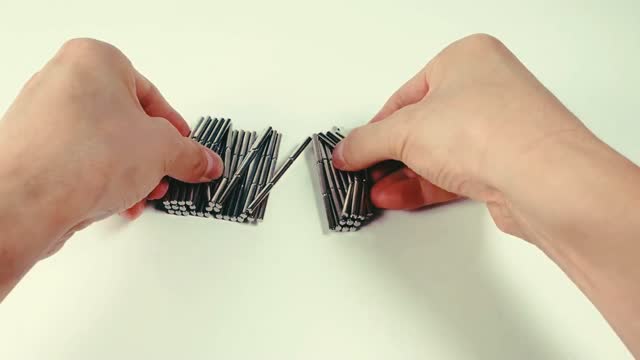Premium Only Content

Behavior of magnets in slow motion
Everyone has heard at least once about such a thing as a neodymium magnet. At the same time, not everyone fully understands what it is and why it is needed. And also, what is the true value of these magnets. It's time to understand the issue in more detail, having learned the history of the discovery, the scope, as well as the pros and cons associated with the use of neodymium magnets.
A neodymium magnet is a magnet made from an alloy of iron, neodymium and boron. They are denoted by combinations of letters NIB, Neo, and NdFeB. Their main feature is that they are a super-powerful magnetic structure based on the Nd2Fe14B tetragonal crystal structure. A neodymium magnet appeared not so long ago. For the first time they received it only in 1982 in the USA, not without the help of Japanese scientists.
Neodymium magnets are produced in two ways. First, iron, boron and neodymium are brought into a powder state, after which all the ingredients are mixed and placed in a special thermal oven, where the powder is baked at a temperature of about 1200 degrees Celsius, and (in parallel with this) is subjected to extreme pressure. The output is a finished magnet.
The second method is similar to the first, however, in this case, a special polymer is injected into the heated ingredients, after which a quickly solidifying neodymium magnet is immediately molded.
Today, the scope of neodymium magnets is so wide that it would be much easier to list those areas where they cannot be found exactly. Such magnets can be found in the vast majority of electrical items, children's toys, household accessories, various complex devices, cars and much more. In farming, neodymium magnets help to remove metal debris from the ground, in cars they clean oil, and in medicine, neodymium magnets are used in the vast majority of modern equipment.
The first and most important advantage of a neodymium magnet is that the field of attraction it creates is much stronger than the field that creates a conventional magnet. In addition, NIBs are very durable. The rate of natural demagnetization is only 1-2% per year. Finally, the relatively low cost of manufacturing this product allows it to be used literally everywhere.
Of course, neodymium magnets have some drawbacks. Firstly, they are quite fragile and can be easily damaged (split) even with minor physical exertion. Secondly, improper use of NIB can harm metal structures and even human health. By the way, it is strictly forbidden to give neodymium magnets to children. Thirdly, due to the strong attraction, it can be extremely difficult to separate two such magnets.
-
 0:34
0:34
Gannon144
3 years agoSlow Motion Stream
23 -
 0:09
0:09
macattack
3 years agoSlow motion puppy
9 -
 0:19
0:19
stevechapter
3 years agoSlow motion
10 -
 3:02:41
3:02:41
TimcastIRL
8 hours agoABC REVIVES Jimmy Kimmel After TERROR Attack On Station, Sinclair REFUSES To Air Show | Timcast IRL
258K147 -
 2:32:12
2:32:12
The Charlie Kirk Show
8 hours agoTPUSA Presents This is The Turning Point Tour LIVE with Michael Knowles
136K65 -
 5:20:38
5:20:38
Drew Hernandez
13 hours agoDISNEY CUCKS FOR KIMMEL & ADDRESSING THE CHARLIE KIRK MEMORIAL AFTERMATH
58.1K19 -
 1:02:28
1:02:28
Flyover Conservatives
12 hours agoThe Most Overlooked Way to Fight Abortion (It’s Not Protests) - Robert Netzly; Why Triple-Digit Silver is Coming - Dr. Kirk Elliott | FOC Show
47.4K3 -
 1:55:33
1:55:33
Glenn Greenwald
11 hours agoDeceitful Hysteria over Tucker's Speech on Kirk; IDF Funder Larry Ellison to Take Over CBS, Paramount, and now TikTok; U.S. Embraces Leading Al-Qaeda Terrorist | SYSTEM UPDATE #519
211K102 -
 34:40
34:40
Donald Trump Jr.
13 hours agoWe Will Make Charlie Proud | TRIGGERED Ep.276
220K93 -
 1:01:49
1:01:49
BonginoReport
11 hours agoErika Kirk Forgives Charlie’s Assassin - Nightly Scroll w/ Hayley Caronia (Ep.139)
123K106